The Slimmer and Smaller Byrne Gyro Dial Meca
Byrne’s multiple personality watch with pivoting indices benefits from more compact dimensions and a new manual-winding movement.
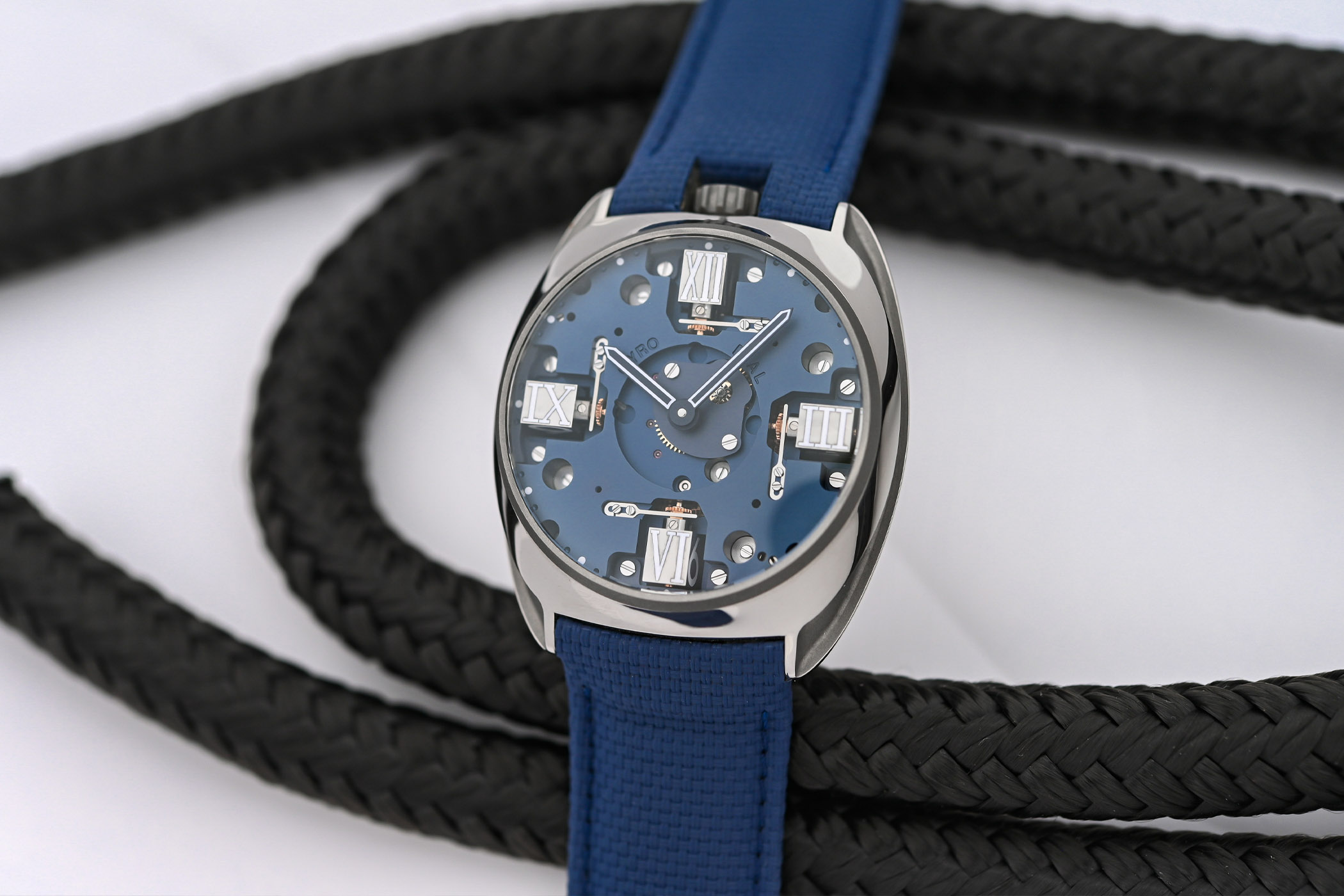
Customisation has fast become a watch industry standard, offering buyers a host of case materials, dial colours, strap options, etc… However, it’s not often that you come across a watch with four different faces, or rather, four different fonts for four revolving numerals on the dial. Designer and former watch restorer John Byrne’s Gyro Dial is not a traditional high-brow complication, but its playful rotating cubes marked an industry first and belie the complex movement developed for Byrne. The latest Gyro Dial Meca, positioned as the inaugural model of a permanent collection, relies on a new manual-winding movement, relocates the crown, and comes in a more compact 38mm diameter case.
Introduced just two years ago, Byrne’s Gyro Dial has quickly gained popularity with its “one watch, four faces” strategy. This unique design approach, represented with closed and openworked dials, is proving to be a winning formula. Like the Gyro Dial Zero and the Gyro Dial Golf Edition, the Gyro Dial Meca reveals some of its mechanical tricks on the dial. With its pronounced apertures on the mainplate hosting the revolving cubes, the Gyro Dial Meca has an edgy industrial vibe contrasting radically with the more refined aesthetics of the movement.
The revisited dimensions of the Gyro Dial Meca are a welcome evolution. With a more compact 38mm diameter (compared to 41.7mm) and a leaner case profile of 12.5mm (vs 14.45mm), wearing the watch is far more comfortable. The case proportions have been refined, and the crown has been relocated from 3 o’clock to noon, giving it a sleeker, more streamlined profile.
The new position of the crown, inspired by John Byrne’s stint as a pocket watch restorer, gives the case a more 1970s bullhead or helmet-style case vibe. However, since this is a manual-winding model, the crown needs to be accessed frequently. Extracting the crown to change the time is easy, but winding the crown might be a little trickier for people with big hands.
Crafted in grade 5 titanium, the case displays some impressive mirror-polished finishings on the flanks, contrasting with the grainy sandblasted finishing of the bezel and the recessed areas running along the case middle. With its more compact dimensions and titanium hull, the watch weighs just 70 grams.
The pivoting cube-shaped indices on the new watch are larger, and their four faces are sculpted in high relief and set inside deep wells carved into the ‘meteorised blue’ mainplate. Like earlier editions, the cubes perform a precise jump at midnight. However, the settings can be changed to make them jump at midday or even on demand via the crown.
Along with the Roman, Arabic (reminiscent of Panerai’s numerals) and Ghost indices, the watch introduces a new Sport variant with a metallised blue background to match the mainplate. To assist legibility, the pencil-shaped hands have a Super-LumiNova outline that emits a light blue glow, matching the lume on the Roman and Arabic numerals. The Ghost and Sport faces are not luminous, but there are small SLN dots on the periphery.
Pivoting or rotating hour cubes are not a new concept, and you might be reminded of Urwerk’s patented revolving satellite hours. While not as complicated as Urwerk’s technology, the spectacle of rotating hour cubes is always entrancing.
Powered by a new manual-winding movement developed by Le Temps Manufacture in Fleurier, the calibre 5557 has 261 parts, including the mechanism driving the rotation of the indices. Each cube is connected via a small wheel to a central gear, and a finger triggers its rotation. As you can imagine, getting four blocks to rotate simultaneously involves a lot of power consumption, making the 60-hour power reserve more than respectable. Visible via the exhibition caseback, the new calibre reveals far more of its components than earlier editions thanks to its elegant, skeletonised bridges and the absence of a rotor.
Marking the flagship model of a new permanent collection, the Gyro Dial Meca retails for CHF 25,000 / EUR 25,850 (excl. tax). As a two-year-old indie brand, that’s a steep price, but from what we can determine, Byrne’s playful watches have charmed more than a few collectors. For more information, please consult byrnewatch.com.



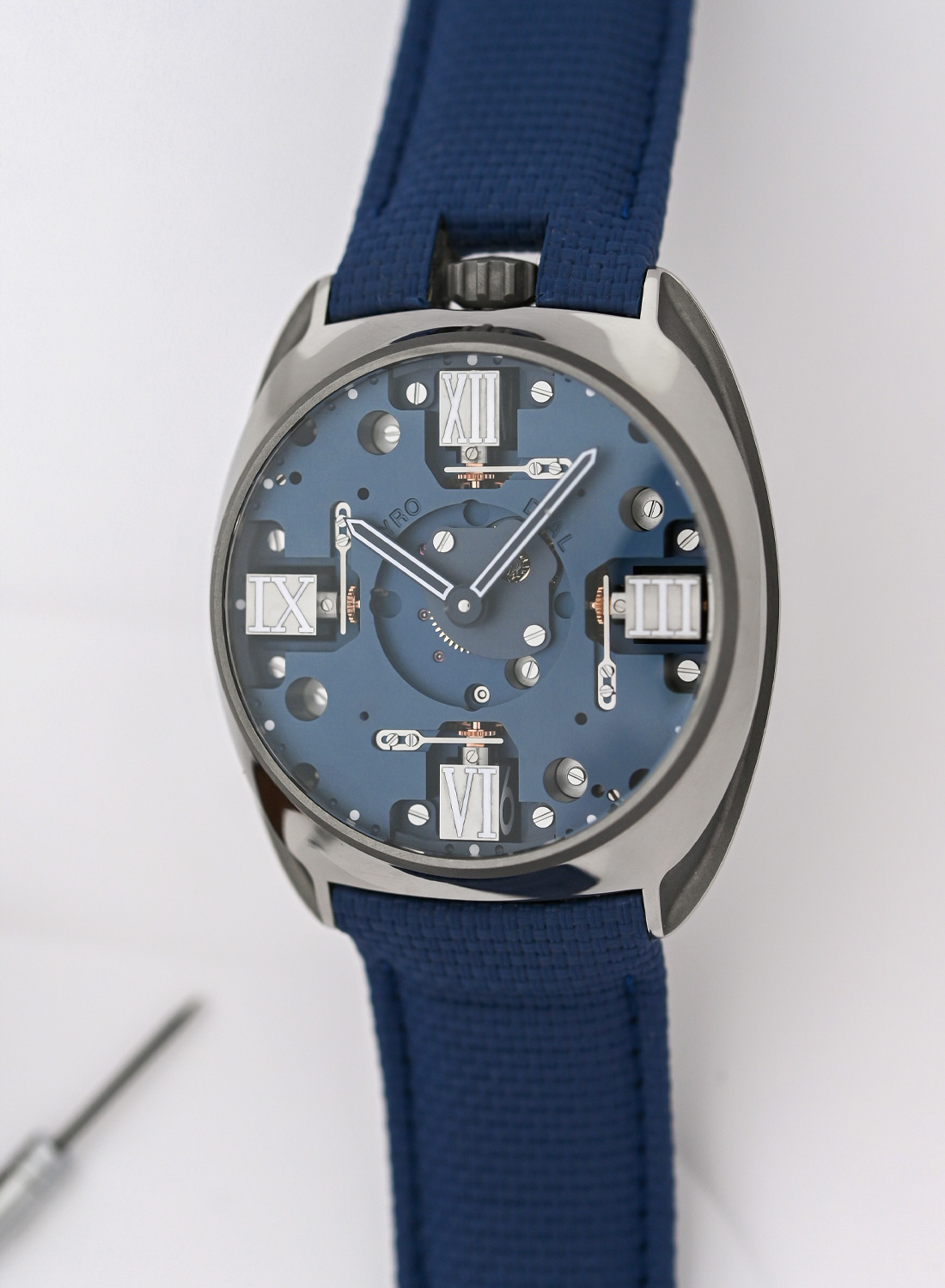


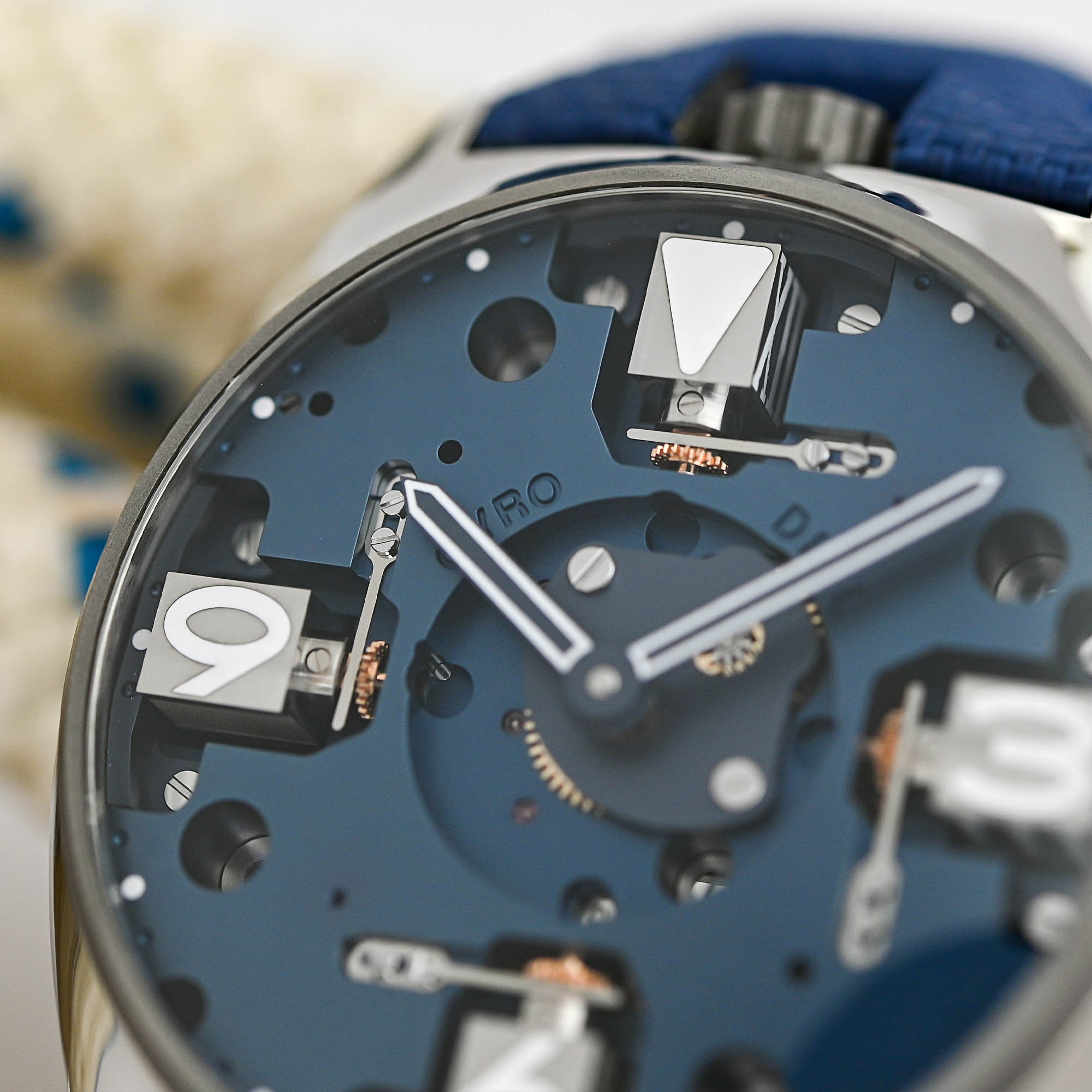
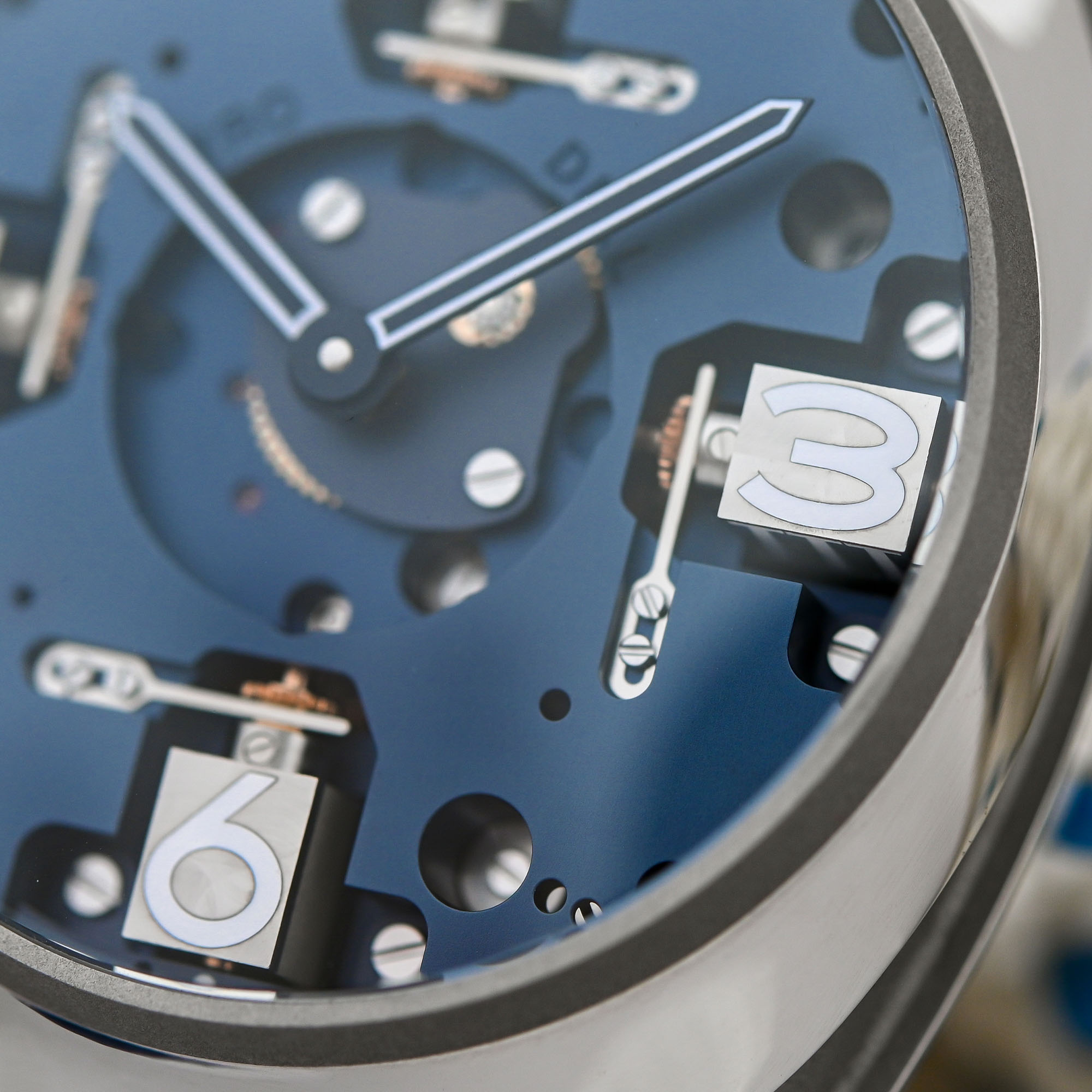

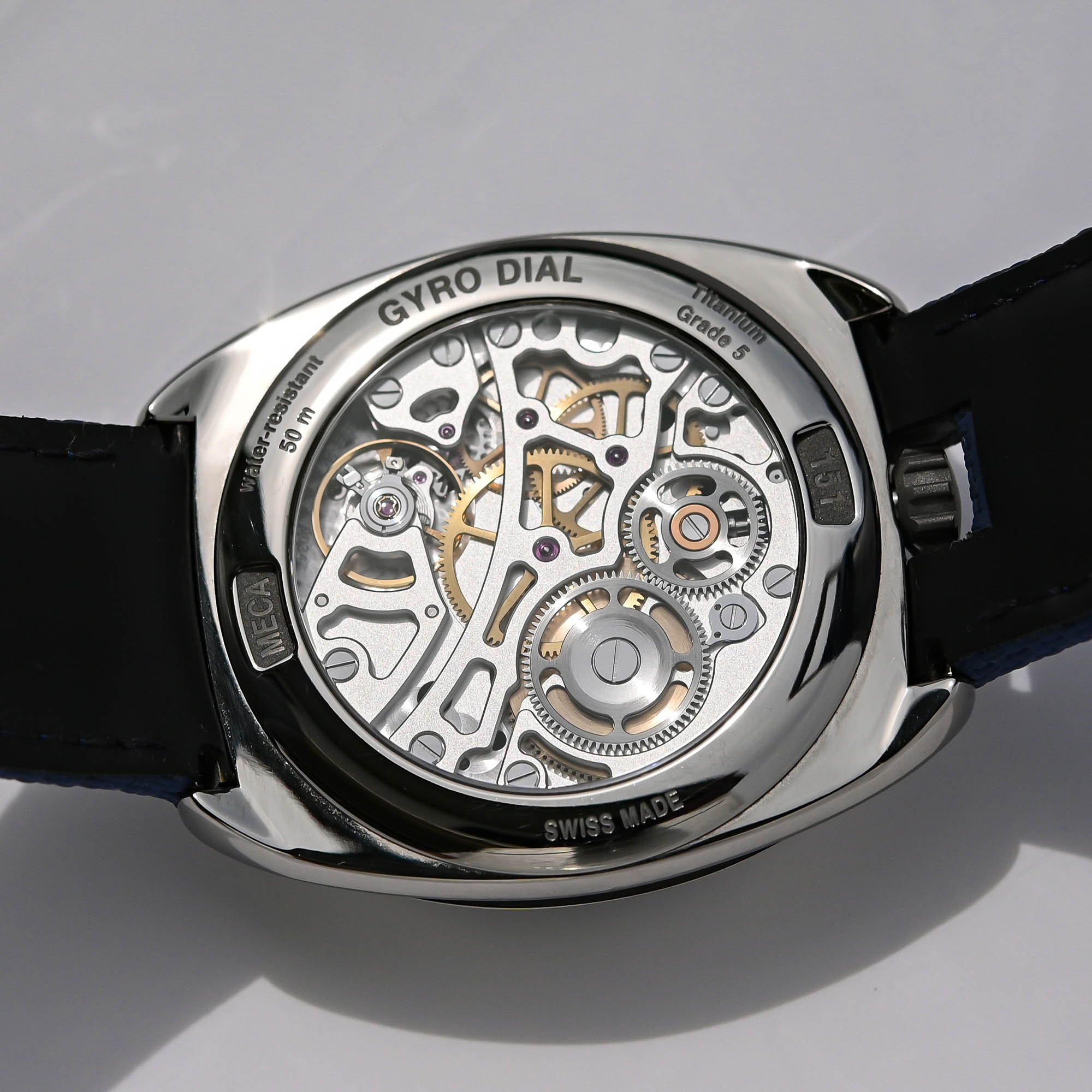




1 response
I think this is hideous. The innovation is brilliant and the smaller size is great (specially for the thin wrists).however it just doesn’t look good at all.